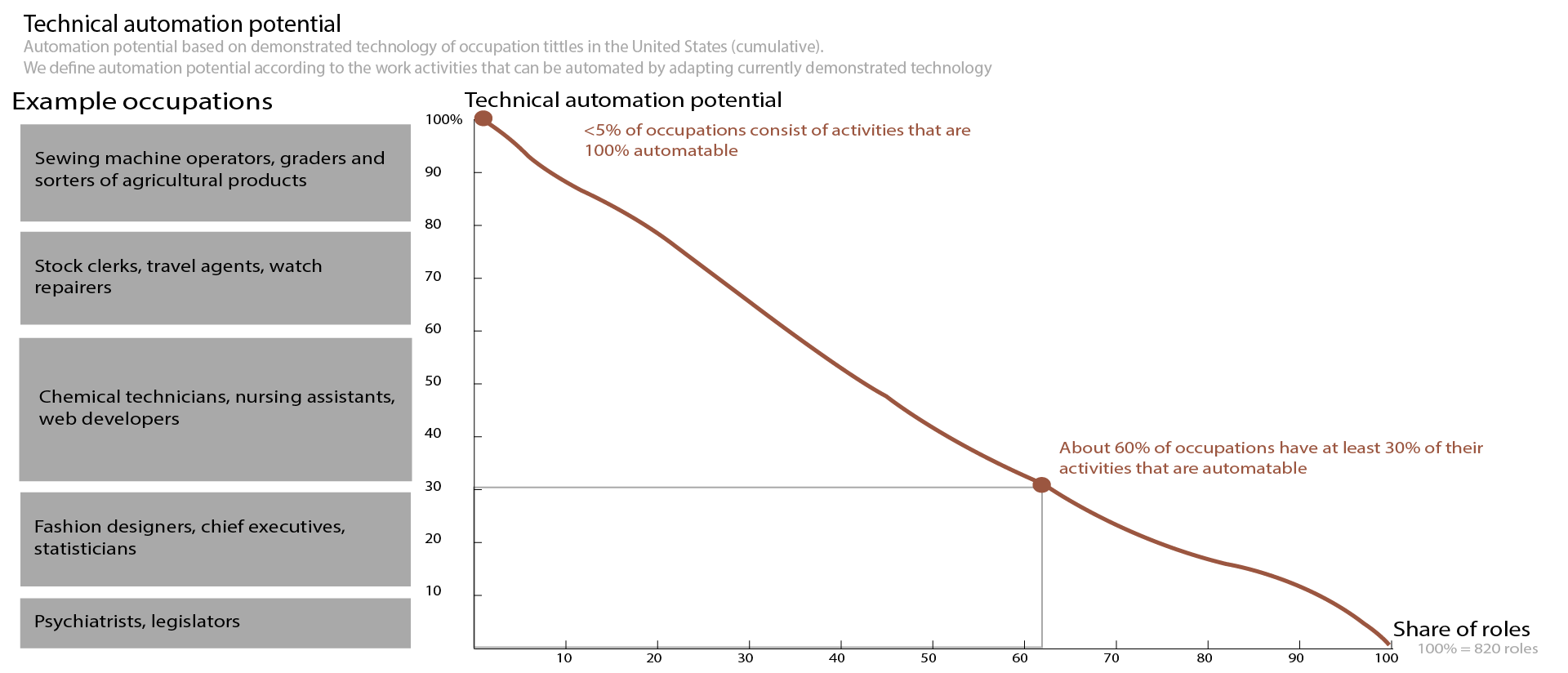Disruptive changes to business models will have a profound impact on the employment landscape over the coming years. Many of the major drivers of transformation currently affecting global industries are expected to have a significant impact on jobs, ranging from significant job creation to job displacement, and from heightened labour productivity A measure of how well an organisation uses its resources (inputs, such as labour and capital) to produce goods and services (outputs) and is typically expressed as a ratio of outputs to inputs. As such, productivity is a measure of efficiency. to widening skills gaps. In many industries and countries, the most in-demand occupations or specialties did not exist 10 or even five years ago, and the pace of change is set to accelerate. (World Economic Forum, 2016)
We are on the cusp of a new 'automation age'. In a study of the scale of change that could be expected from recent developments in robotics, artificial intelligence, and machine learning, the McKinsey Global Institute developed a template for estimating the automation potential across 2000 work activities and more than 800 occupations within the United States.
Results are shown below. This summarises the potential impact of automation across the global economy.

